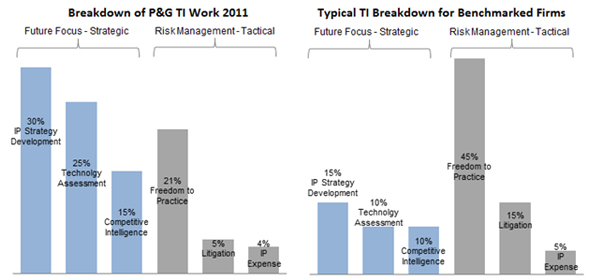When I ran competitive intelligence at Procter & Gamble I was lucky to also have responsibility for “technical intelligence”. This included having a couple of incredibly talented PhD’s working for me.
These individuals, career wise, belonged to P&G’s Research & Development organization but sat with us in Corporate Strategy and owned the company’s Technical Intelligence toolkit – a suite of intellectual property search and analysis tools.
Their location in Corporate Strategy was not the result of some brilliant insight or master political stroke, but it was unique and served us very well.
It enabled P&G to link the technology and commercial aspects of intelligence in ways rarely seen in most organizations. For commercial customers, insight into intellectual property and technical capabilities helped complete the picture of competitor behavior. Understanding commercial choices and capabilities often helped technical audiences understand the logic behind competitor’s innovation choices.
As time went by, we did extensive organization benchmarking, visiting with almost 20 Fortune 1000 firms. These visits included discussions about how firms conducted technical intelligence. More often than not, we found that benchmark firms used technical intelligence largely in the service of legal risk management. Generally, most firms did not see the possibility of using technical intelligence as a future oriented tool that could enable decision making and investment direction.

On October 10th at RECONVERGE:G2 in Indianapolis, we are going to explore how to get technical intelligence tools out of the attic and into the front lines of your competitive intelligence program. We are going look at how to use these tools to better assess competitors and markets as well as help enrich management decision making.
Originally posted at RECONVERGE.NET on September 13, 2013.

Test comment